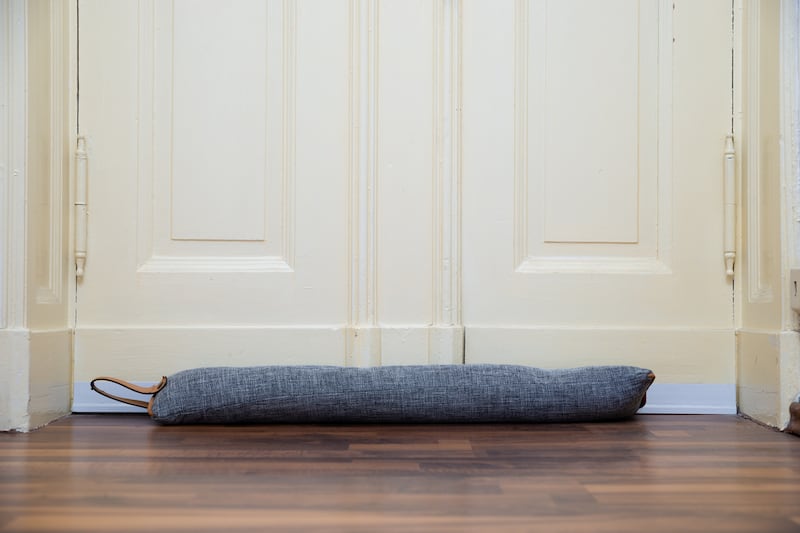Warm homes are a hot topic right now, but what actually works when an expensive professional insulation job is not an option?
Lay a rug
The first step that makes a massive difference is tackling floors and doors. Draughts pouring under doors or heat escaping through gaps in floorboards can be prevented with some easy moves.
When it comes to floors, invest in a large, flat-weave rug. They are denser than a pile rug, which means they are much more efficient in keeping draughts below and ensuring your warm air hangs around for longer. Another bonus of a flat weave is that they are cheaper than pile rugs, giving you more fabric for your money. Divine.
Make a snake

Next up are doors – the front door being the main culprit. It can let heat escape at a rapid rate, as well as pouring cold air from outside through your home. You can tackle it in two ways.
First is to make sure your internal doors are draught-proofed as much as you can. This will mean it’ll be, at worst, your hall feeling the brunt.
This can be done with a quick upcycle. Cut the leg off a pair of old tights and stuff it with old fabrics, making a draught excluder, or door snake as they are sometimes called. The stuffing can be tea towels, rags, old clothes, more old tights and so on. You just want to make sure it’s nice and compact, as density plays a huge role in the effectiveness of draught prevention here. Place along the bottom of doors to keep each room free from front-door draught.
Hold your hand around the edges of the door when closed and, if you feel air coming through, you need to replace your seals
Now you need to seal the front door itself. The easiest part will be the bottom. Your local DIY store will have door combs (about €10) and rubber door strips, which can attach to the bottom of the door, blocking air going in and out. If you are renting do not worry, these can be fixed into place using command strips and don’t have to be screwed or glued. Make sure you measure your door well first and practice opening and closing with the strip taped into place before you permanently attach, as an uneven floor could make it catch.
A fresh round of draught seal (about €6 a strip) is also worthwhile here. Hold your hand around the edges of the door when closed and, if you feel air coming through, you need to replace your seals. The easiest way to get the correct replacement is to cut a section of old seal and take it to a DIY store. When applying, make sure you clean the door frame well, as any left over glue from old strips or dust can prevent new tape from sticking. Don’t forget, some windows can use these too.

Work on windows
This last tip is my favourite – secondary glazing film. These are plastic sheets that look almost like cling film, and cost from about €10 in your local hardware shop. They come with a tape for you to fix them to your windows, and you then tighten them with the heat of a hairdryer, to create a double glazing effect. Air is one of the best insulators around due to its molecular configuration, so these films, when securely in place, create a stagnant pocket of air that helps to double up old window panes and keep you cosy.










